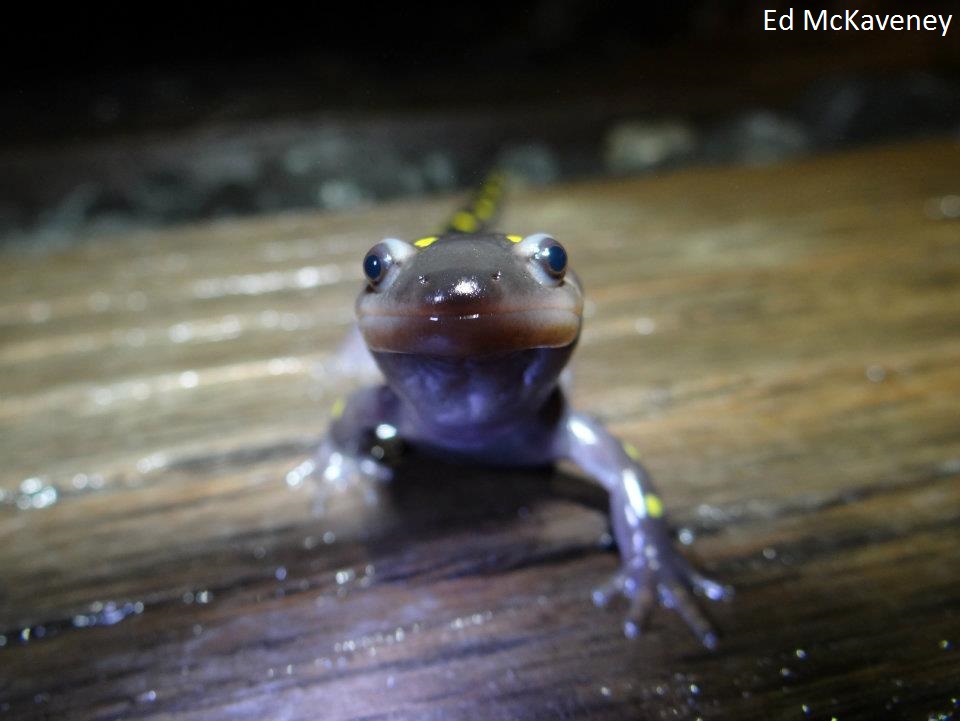Blog

#bioPGH Blog: More Than a Puddle
 A resource of Biophilia: Pittsburgh, #bioPGH is a weekly blog and social media series that aims to encourage both children and adults to reconnect with nature and enjoy what each of our distinctive seasons has to offer.
A resource of Biophilia: Pittsburgh, #bioPGH is a weekly blog and social media series that aims to encourage both children and adults to reconnect with nature and enjoy what each of our distinctive seasons has to offer.
If you walk along Pine Creek in Hampton Township in the spring, you will notice multiple low-lying spots near the creek that are filled with water. By summer, those same spots will most likely be completely dry. Perhaps one or two will be a bit muddy, but they will hardly show a sign that only a few months earlier, you could walk in water up to your knees. These little seasonal “ponds,” called vernal pools or ephemeral pools, may only be around for the spring, but they are quite important year round. Let’s explore!
Vernal pools are defined as small seasonally-present wetlands or pools that are often found in little depressions of land. They can be fairly small, maybe a few square yards, or the size of a small, shallow pond; and they have no permanent water source or drainage, thus relying on annual precipitation and snow melt to fill them. What differentiates vernal pools from big puddles is their predictable annual arrival and the fact that they are heavily used by some species every season because of their regular appearance.
Despite their fleeting nature, vernal pools are uniquely important habitat types. Since they aren’t permanent bodies of water, they tend to lack predators like fish. Thus, they are perfect sites for animals like frogs and salamanders to lay eggs. Intriguingly, vernal pools also make an excellent home for some little invertebrates that can tolerate complete desiccation (drying out)! Fairy shrimp, for example, are tiny relatives of shrimps and crabs, and they intentionally lay eggs in vernal pools because those eggs (called cysts) can survive the pool drying out over the rest of the year. The eggs then hatch once the pools are filled. If you visit the Hampton Township vernal pools that I mentioned earlier, you would find an exciting abundance of these quirky little fairy shrimp, swimming about in the water with their distinct rhythm that mildly resembles scooting. Many of those pools are also a key habitat type for our local spotted salamanders.

Spotted Salamander found near a vernal pool in Allison Park.

Fairy Shrimp, USGS photo
Pennsylvania actually has a registry for vernal pools through the Pennsylvania Natural Heritage program (a collaborative effort of the PA Department of Conservation of Natural Resources, Fish and Boat Commission, Game Commission and the Western PA Conservancy.) The registry helps wetland researchers identify vernal pools throughout the state, and it will assist them understand the function and use of vernal pools in ecosystems. The development of the registry also helps us citizens since the old adage “Out of sight, out of mind” often applies to the locations of vernal pools: since the pools are absent for most of the year, many outdoor projects we might start in the summer could accidentally overlook them completely, risking important wildlife habitat.
Connecting to the Outdoors Tip: If reading this post brought to mind an area you know is always full of water each spring, check out the details to the vernal pool registry! And if you have access to the little pool, see if you can check out the little aquatic invertebrates that might be swimming about! And be sure to be on the look-out for my favorite little stinky sign of spring—skunk cabbage often grows near vernal pools.
Continue the Conversation: Share your nature discoveries with our community by posting to Twitter and Instagram with hashtag #bioPGH, and R.S.V.P. to attend our next Biophilia: Pittsburgh meeting.
Resources
PA Natural Heritage: Vernal Pools
Michigan State University: Michigan Natural Features Inventory—Vernal Pool
National Wildlife Federation: Fairy Shrimp
Photo Credits: Nicholas Tonelli CC-BY-2.0, USGS Public Domain, Pexels CC0

